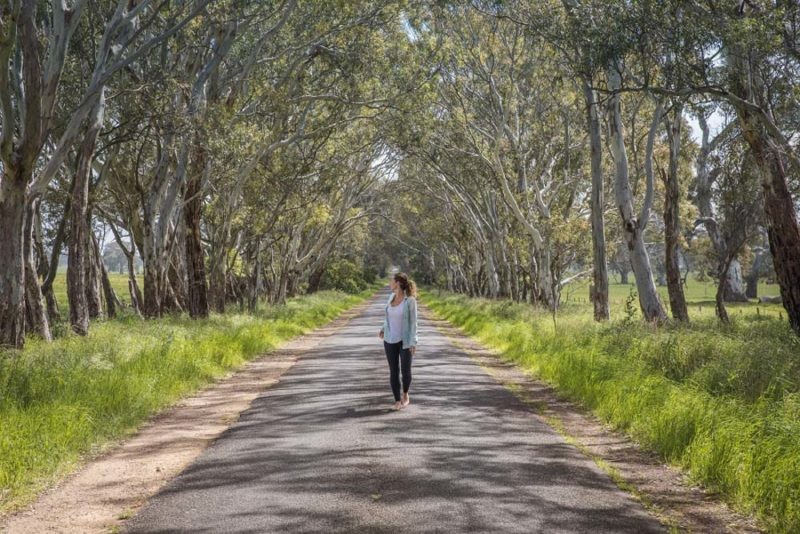Australia, a land often imagined as a vast, remote expanse of outback and beaches, offers an incredible adventure for backpackers. Ditching the initial stereotypes of dull cities and questionable food, a backpacking trip across Australia unveils a country of stunning beauty and diverse landscapes. This guide is designed to equip you with essential information for planning an unforgettable backpacking trip to Australia.
When is the Best Time to Backpack Australia?
Given Australia’s size, the ideal time to visit depends heavily on your destination. Understanding the different climates is key to planning your trip:
- Northern Australia: (Queensland, Northern Territory, Northern Western Australia) June to September (winter) offers the most pleasant weather. Summers are extremely hot and prone to tropical storms and flooding, potentially closing roads.
- Southern Australia: (New South Wales, South Australia, Tasmania, Southern Western Australia) November to April (summer) is ideal. While Australia is known for sunshine, winter does occur, with cooler temperatures in cities like Melbourne and Sydney, and even snow in the mountains. Pack accordingly!
Visa Requirements for Backpacking Australia
Depending on your nationality, age, and the length of your stay, visa requirements will vary. Consult the official Australian Department of Home Affairs website for the most up-to-date information and to determine the visa that best suits your needs. Common options include tourist visas and working holiday visas.
Currency and Banking in Australia
The Australian Dollar ($AUD) is the national currency. ATMs are widely available throughout the country, particularly in major towns and cities. Be aware that most ATMs will charge a small fee ($2-$3 AUD) for using cards from other banks. Credit cards are widely accepted. As of late 2023, $1 AUD is roughly equivalent to $0.65 USD.
Getting Around Australia: Transportation Options for Backpackers
Navigating Australia’s vast distances requires careful planning. Consider these transportation options:
The Sea Cliff Bridge hugs the coastline of New South Wales, offering breathtaking views and showcasing Australia’s incredible road trip potential.
- Bus Travel: Companies like Greyhound offer extensive routes and hop-on-hop-off passes, providing flexibility. Prices for direct routes between major cities range from $75 to $150 AUD. Tours are also available.
- Domestic Flights: Budget airlines like Jetstar and Virgin Australia offer affordable flights between major cities (as low as $40 AUD). Check baggage allowances carefully, as they often have strict weight limits, especially for carry-on luggage (typically 7kg). Use Skyscanner to compare flight prices.
- Campervan Rental: For longer trips, renting a campervan is an excellent option, providing both transportation and accommodation. Australia boasts numerous campgrounds, including free ones. Companies like Jucy, Hippie Camper, and Britz offer campervan rentals. Expect to pay between $400 and $700 per week, depending on size and features.
- Buying a Car/Campervan: If you plan to stay for an extended period (months), buying a vehicle can be more economical. Websites like Gumtree offer listings for used cars. A budget of $4,000-$6,000 AUD can get you a reliable Subaru station wagon or a converted campervan. Remember to factor in registration, insurance, and maintenance costs. Having a mechanic inspect the vehicle before purchase is crucial.
Backpacking Culture in Australia
Australia has a thriving backpacking scene. Hostels are readily available, and campervan travel is a popular way to explore. Free campsites help keep costs down. Online communities and Facebook groups are excellent for connecting with other travelers, sharing tips, and finding travel buddies to split costs on road trips.
Food and Drink in Australia
Australian cuisine includes meat pies, fish and chips, and BBQ. Budget travelers can save money by cooking their own meals, buying groceries at Woolworths or Coles. A cheap takeaway meal costs around $10 AUD. Restaurant options in cities are diverse and delicious, albeit more expensive.
Budgeting for Your Backpacking Trip to Australia: Example Costs
- Petrol: $1.20-$1.50 AUD per liter (can reach $2.00 in remote areas)
- Beer (6-pack): $18-$24 AUD
- Cask wine (“goon”): $12-$18 AUD (2L-5L)
- Wine (bottle): $7-$12 AUD
- Takeaway meal: $8-$15 AUD
- Coffee: $5 AUD
- Dorm bed: $25-$30 AUD
Essential Apps for Backpacking Australia
- CamperMate: Free app with information on campsites, petrol stations, attractions, and more.
- WikiCamps Australia: Paid app ($7.99 AUD) with extensive user-generated content on campsites, facilities, and points of interest. Download offline content for use in areas with limited internet access.
Top 7 Places to Visit While Backpacking Australia
- Queensland’s Islands: Explore the Whitsunday Islands, Fraser Island, and the Great Barrier Reef. The Whitsundays offer incredible beach camping.
- The Outback: Experience the vastness of the Red Centre. Visit Kings Canyon, the West MacDonnell Ranges, Devils Marbles, and Uluru.
- Great Barrier Reef: Dive or snorkel in the world’s largest living organism. Cairns is a popular departure point for tours.
- Great Ocean Road: Take a scenic road trip along Victoria’s coastline. Visit the Twelve Apostles, Cape Otway, and explore waterfalls.
- New South Wales: Explore Sydney’s beaches and attractions, hike in the Blue Mountains, and visit Jervis Bay.
- Tasmania: Hike in the wilderness, visit the Tasman Peninsula, Freycinet National Park, and the Bay of Fires.
- Western Australia: Discover remote landscapes, stunning beaches, and unique attractions like Margaret River, the Kimberley, and Ningaloo Reef.
Suggested Backpacking Itineraries for Australia
Consider these itineraries based on your travel duration:
- 1 Week:
- Sydney and the Blue Mountains
- Melbourne and the Great Ocean Road
- Alice Springs and the Outback
- Brisbane to Airlie Beach (Fraser Island & Whitsundays)
- 2 Weeks:
- Sydney to the Great Ocean Road
- Melbourne, Great Ocean Road, Grampians, and Adelaide
- Brisbane to Cairns
- Alice Springs, the Outback, and Darwin
- Tasmania’s highlights
- 1 Month:
- Sydney to Cairns (New South Wales and Queensland)
- Queensland and the Outback (to Adelaide)
- Perth to Darwin (Western Australia)
- Extensive Hiking in Tasmania
Is Australia Worth Backpacking?
Absolutely! Australia offers incredible diversity and natural beauty. Plan at least two to three weeks to explore a specific region in depth. While tempting, trying to see the entire country in a short time leads to rushed travel and long driving days.

